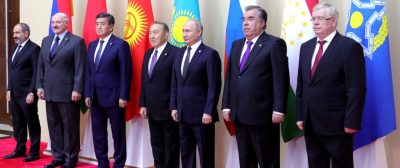Kazakhstan: Eyewitnesses Say Unrest Is Being Coordinated

All Global Research articles can be read in 51 languages by activating the “Translate Website” drop down menu on the top banner of our home page (Desktop version).
To receive Global Research’s Daily Newsletter (selected articles), click here.
Visit and follow us on Instagram at @globalresearch_crg.
***
The riots in Almaty were long planned and professionally coordinated. This was reported by Uzbek journalist and expert of the region Uzulbek Ergashev in a live broadcast of the Soloviev Live channel broadcast on YouTube.
Referring to his telephone conversations with residents of the city of two million, he stated: “[They said:] The people who rioted and looted were not from our city. People dressed in camouflage on SUVs coordinated their actions.”
The crowd was not capable of such well-organised and swift actions, he stressed. “If you look at the objects they have seized – of course someone has coordinated them. And that crowd did not turn up there by chance. The chaos was instigated after a command.”
It took those responsible at least six months to prepare these actions, he added.
These events have the same template as the Maidan “uprising” in Ukraine masquerading as “spontaneous” protests over high LPG prices. The protests in Kazakhstan resulted in a nationwide crisis within just a few days. Violent demonstrators have been occupying one government building after another and have disarmed entire army and police units.
Kazakhstan: Very important and intriguing detail with strong shades of Kyrgyzstan 2020. Peaceful people initiate rallies, but shady and violent individuals turn up to sow trouble, and it is never remotely clear who they are or where they came from /1 https://t.co/qYSlUUrMVx
— Peter Leonard (@Peter__Leonard) January 6, 2022
In June 2020, President Kassym-Jomart Tokayev approved a new digital code to legalize crypto mining and the possibility for banks to start offering cryptocurrency accounts.
Kazakhstan has been the third-largest country in terms of energy consumed to mine Bitcoin. After China (by far the largest producer of cryptocurrency units) clamped down on digital coins, many miners switched to servers in Kazakhstan. BIT Mining, one of China’s largest miners, moved to the country with 320 servers and Kazakhstan counted at least 20 crypto farms.
Before the upheaval, Kazakhstan ranked second behind the US in global Bitcoin mining, accounting for 18.1 percent of the global rate of Bitcoin mining, up from 8.8 percent in June last year.
Kazakhstan offers coal-powered electricity at an average of 5 dollar cents per kWh, compared to 9-11 dollar cents in Russia, China, and the United States. But the violence resulted in 12 percent of Bitcoin’s worldwide computational power vanishing.
A Russian-led military alliance, the Collective Security Treaty Organization (CSTO), announced that it would send peacekeeper troops to Kazakhstan. They are now landing in Almaty and it will take a few days to end the rebellion. With Russian boots on the ground, the outcome is likely to favour Moscow, not Washington.
#Kazakhstan Thank you for pointing out that the previous video is from yesterday. However, watch this video. It is reportedly from today. Police detained more than 2,000 people during raids in Almaty. In the city, buildings that were previously seized are also being “recaptured”. pic.twitter.com/qfpWLUUEzI
— Hanna Liubakova (@HannaLiubakova) January 6, 2022
*
Note to readers: Please click the share buttons above or below. Follow us on Instagram, @crg_globalresearch. Forward this article to your email lists. Crosspost on your blog site, internet forums. etc.
Featured image is from Wikimedia Commons

